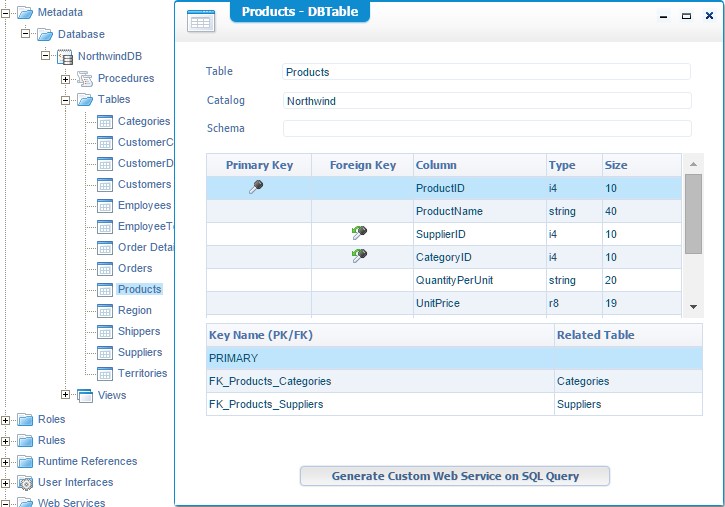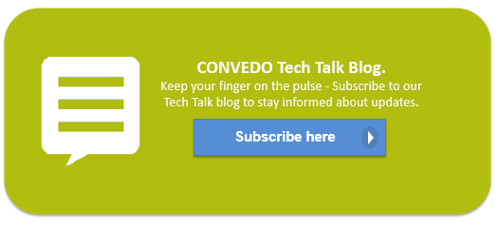The OpenText Process Suite ABC Glossary - DTAP and Database Metadata

Is Your AI and Automation Strategy Right for You?
DTAP
Development, Test, Acceptance and Production. This defines a phased approach to software development and testing. You can refer to the previous blog on Collaborative Workspace for more details.
Database Metadata
Database metadata is an OpenText Process Suite (OTPS) platform document that is generated by reading the data dictionary or data definition of a relational database, managed by an RDBMS (Relational DataBase Management System) such as Oracle, Microsoft SQL Server, or MySQL. A metadata document contains data about data, i.e. underlying data that describes or defines the data itself. With the OTPS platform, the metadata document on a database will include the definition details of the stored procedures, the tables and their relations, and/or the views defined on these tables that are stored in the associated database. The following screen capture illustrates the contents of a metadata document generated on the Northwind database tables, with an example data definition of the Products table:

The database metadata document serves as a starting point for generating web services. Based on the definitions stored in the metadata document the OTPS platform can assist you with the development of web services by generating a number of standard web service operations:
- Get operations, to read data from the tables (or views), retrieving a single record or range of records. For example, a single product record identified by its primary key, or range of product records specified by the primary key range.
- Relational operations, to read a set of data records based on the referential or foreign key relationship between tables. For example, read all products that are supplied by a specific supplier, as the supplier primary key is used as a foreign key reference in each product record.
- Navigational or pagination operations to read a set of next or previous records from the table. Typically used with the user interface layer of the OTPS platform to select the next or previous set of records. When you create a form through the user interface layer, it is able to generate a fully functional maintenance form with input fields based on the columns of the record and for reading the data from the given tables, it includes a number of buttons to select the next or previous records.
- One single web service operation for each table to execute CUD (Create, Update or Delete) operations. The web service is called “update_tablename” and will either insert, update or delete a single record from the given table.
In addition to these standard type of web service operations, you can define your own kind of custom web services to read data from the given table.
Note that with the OTPS platform suite, the term “tuple” is frequently used as synonym for record.
When generating web service operations on the metadata database document, you can create two types of implementation for these services:
1. SQL, implementation type is indicated as “DBSQL”.You can directly generate the abovenmentioned standard web service operations based on the metadata document. The implementation of the web service operation is based on a standard ANSI SQL statement, for example, a Select statement is generated to read the data from the database. These type of services are in most cases used for proof of concept purposes, to quickly demonstrate the capabilities of the OTPS platform to connect to a relational database.
2. Java by means of a WS-App Server Package, in this case the implementation type is indicated as “BsfJavaCall”. These type of web service operations are built in two steps: first you create the WS-AppServer Package, and next generate web service operations based on the package contents. Refer to the topic: WS-AppServer Package for more details.These type of service allow for much more flexibility as they are implemented by means of Java source code, and you are able to modify the generated Java source code while applying object-oriented programming concepts inheritance, encapsulation, polymorphism, overwriting, etc.
In addition to database metadata, with the OTPS platform you can also create a Java class metadata document, this generates a metadata document based on a Java class or Java archive file. Using the metadata definition of the Java class or Java archive, you can next generate web services operations based on the static methods listed in the Javaclass metadata document.
Using the database metadata or Java class metadata document enables you to build web service operations that you can use in business process models to implement some of the activities that are modelled in the process. For example, in the process model you need the customer details for processing, you can use the OpenText Process Suite (OTPS) platform to develop the web services to read the relevant customer data from different sources.
List of abbreviations
| Abbreviation | Description |
| ANSI | American National Standards Institute |
| BAM | Business Activity Monitoring |
| BER | Business Event Response |
| BPML | Business Process Modeling Language |
| BPMN | Business Process Modeling Notation |
| BPMS | Business Process Management Suite (or System) |
| CAF | Composite Application Framework file extension |
| CAL | Composite Application Logging (framework) |
| CAP | Cordys / Composite Application Package (file extension) |
| CARS | Cordys Admin Repository Server |
| CMC | Cordys Management Console |
| CRUD | Create, Read, Update and Delete, data manipulation operations with a relational database |
| CWS | Collaborative Work Space |
| DTAP | Development, Testing, Acceptance and Production |
| ESB | Enterprise Service Bus |
| HW | HardWare |
| IDE | Integrated Development Environment |
| IP | Internet Protocol |
| JAR | Java ARchive file extension |
| JVM | Java Virtual Machine |
| KPI | Key Performance Indicator |
| LDAP | Lightweight Directory Access Protocol |
| OMG | Object Management Group |
| OTPS | OpenText Process Suite |
| PIM | Process Instance Manager |
| PMO | Process Monitoring Object |
| RDBMS | Relational DataBase Management System |
| SCM | Software Configuration Management |
| SCXML | State Chart XML |
| SOA | Services Oriented Architecture |
| SOAP | Simple Object Access Protocol |
| SQL | Structured Query Language |
| SSU | State Sync-Up |
| SVN | SubVersioN |
| SW | SoftWare |
| W3C | World Wide Web Consortium |
| WfMC | Workflow Management Coalition |
| WSDL | Web Service Definition Language |
| WSI | Web Service Interface |
| WSO | Web Service Operation |
| XML | eXtensible Mark-up Language |
| XPDL | XML Process Definition Language |
Don't miss out on future blog posts! Subscribe to email updates today!


